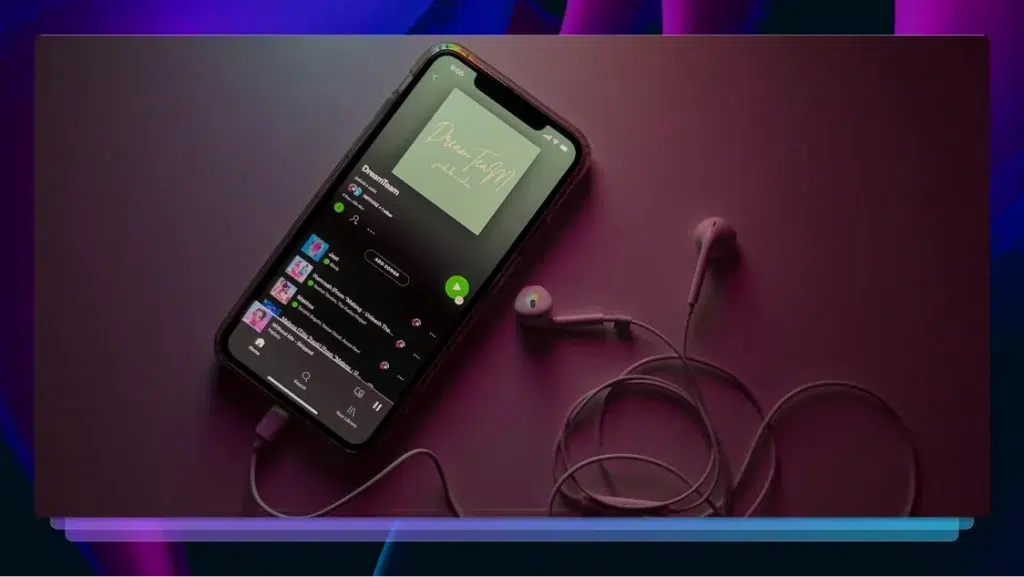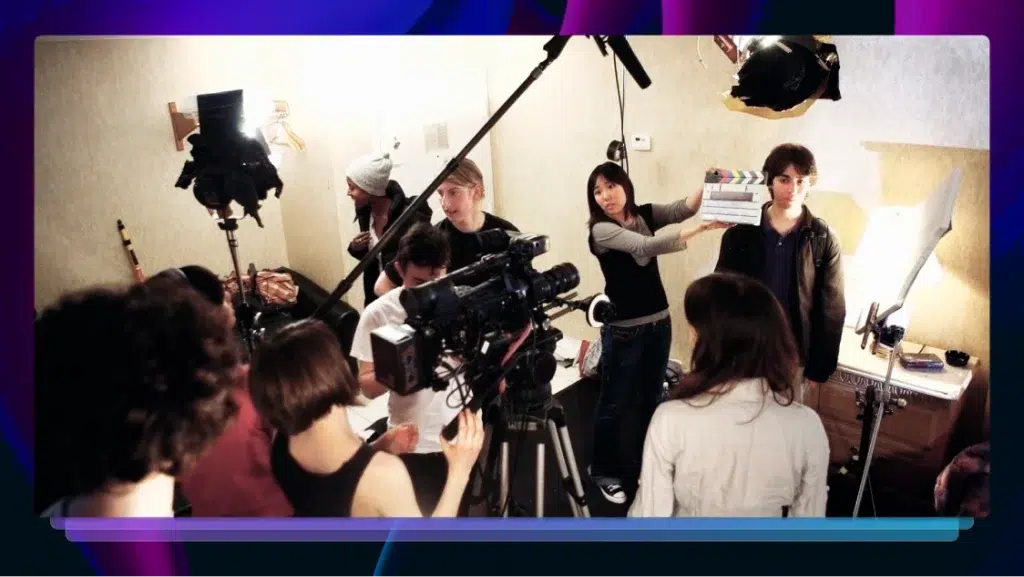The Modern Journalist’s Guide to Success: From Typewriters to Touch Screens
Journalists must adapt their reporting styles to become a trusted source of truth to new, more skeptical audiences. Let's talk about how.

Twitter updates, news feed scrolling and push notification alert, after alert, after alert.
Did we make you look at your phone?
Joking aside, the alerts travel fast, en masse and they never stop. Unless you have enough self-control to disable them, of course. Please send us your secret if you do.
Someone, somewhere is documenting and broadcasting new information to the world. Which is why now, more than ever, we need ethical journalists who report credible, fact-checked news that can cut through the noise of misinformation.
More than ever before, we need ethical journalists who report credible, fact-checked news that can cut through the noise of misinformation.
Modern journalists must adapt their reporting and publishing styles if they hope to become a trusted source of truth to new, more skeptical audiences. It’s a high bar to meet, but it is certainly possible. And so important.
With the right philosophy, work ethic and tools, you can far exceed everyone’s expectations and become the standard for modern journalism. Let’s hear from actual journalists and talk about how.

What’s in this guide?
- Intro: The Modern Journalist’s Guide to Success
- From Typewriters to Touch Screens, the Evolution of Journalism
- New Media, News Sources, and Everything Digital
- New Media Tools for Journalists: How to Leverage the Modern Digital Toolbox
- A Quick Review of Journalism Ethics
- Streamline Research
- Remember: It Always Starts with a Question
- Develop a Data-Driven Mindset
- When All Is Said and Done, Be Sure to Identify the Why
- Conduct Interviews the Smart Way
- Interviewing Tips and Tools
- Content Distribution Strategy for Journalists: Publish in All the Right Places
- Long-Form Video Stories and Livestreams
- Short-Form Video News Stories and Updates
- Web Articles and Updates
- Photos and Captions
- Personal Branding for the Modern Journalist
- Building Credibility
- Knowing When to Follow Protocol and When to Break the Rules
- Point of View Is More Important Now than Ever
- Network and Build Relationships with Social Media
- Master Your Multimedia Knowledge
- How to Build your Journalism Portfolio: Using Hootsuite, Squarespace and More
- Social Media Management
- Research Management and Organization
- Content Hosting
- The Takeaway
- Journalism Survey Results
- Journalists from the New York Times, Forbes, and more talk about their journalism experience and favorite journalism tools
From Typewriters to Touch Screens
To understand the current state of journalism, we need to look back to what led us here. Historians can point as far back as the 1400s for examples of early journalism. But it wasn’t until the invention of the printing press that journalism as we know it today was born.
Printing presses opened the doors for newspapers, gazettes and informational pamphlets to be distributed in towns around the world. In 1655, The Oxford Gazette became the first periodical ever published. As literacy and political interest spread, so too did journalism. Citizens started demanding laws that protected the press from any persecution should they write unfavorably about the government or those in power. As we know now, these protections continue to be important today.
By the 1800s, in America, there were over 200 different newspapers circulating. As each new town was established, journalism became the best way to keep people educated and engaged in politics. By the middle of the 1800s, the Associated Press was formed and journalism grew big enough that it began to split into different genres and mediums, including television.
With the invention and widespread adoption of the internet, journalism experienced another huge shift — much like it did with the invention of the printing press. People no longer relied on their nightly newscast or their newspaper subscription for the latest news. They found electronic versions of articles that were much more convenient to read and share.
And then, social media platforms took off. People abandoned their traditional newspaper subscriptions for more engaging online content. They wanted videos and sensational stories that they could quickly understand. Traditional print publications struggled to adapt to the new demands, but online publications based on niche interests started to thrive in the new, social environment.
Perhaps, most significantly for the modern journalist, the internet also made it much easier for journalists to work for multiple publications at once. They no longer worked for a single newspaper, beholden to the ideas of a single editorial team. Journalists could follow their own passions and pitch their stories to whatever publication was the best fit. From this, Backpack Journalism was born. A backpack journalist is one who has to do every aspect of publishing a story themselves. They are their own reporter, photographer, videographer, editor, and producer.
A backpack journalist is one who has to do every aspect of publishing a story themselves. They are their own reporter, photographer, videographer, editor, and producer.
Without the gatekeepers of traditional newspapers, the modern journalist is free to work on whatever story excites them. The trade-off is they have to do everything themselves. In the era of New Media, doing everything yourself can mean quite a bit.

New Media, News Sources, and Everything Digital
What does it really mean for the way we consume news?
New Media, put simply, is everything digital. The New Media umbrella includes social media, online publications with hyperlinks and comment threads, videos, digital streaming platforms, video games, phone apps, plus virtual and augmented reality. Basically, anything that isn’t print, radio or television is considered new media.
When you consider the saturation of smartphones, tablets and other mobile devices, it makes sense that New Media is taking over people’s attention. Instead of being home for the nightly newscast, or waiting until Sunday to get the newspaper, people can dictate for themselves when and where they consume media. The convenience coupled with the desire for more niche information created a dramatic shift from Old Media to New Media.
In 2017, it was reported that the average time spent watching TV decreased by 19% between 2012 and 2016, with an average 37% decrease from viewers between the ages of 12 and 34. Not surprisingly, the increase of digital content consumed was 19%.
Newspapers have also suffered a big hit in the last 10 years. Overall ad revenue for newspapers is a third of what it was previously. Meanwhile, in 2018, New Media giant, Netflix, became the highest valued media company in the world. And their competitor, Hulu, is enjoying over $100 billion dollars in ad revenue. While television isn’t completely dead, as we move into the future, its power over audiences will continue to decrease.
So, what does all of this mean for the modern journalist? Most importantly, it means that access to information is democratized. The reader dictates who is considered a trustworthy journalist. In previous generations, a journalist was trusted simply because they held the title. In the New Media era, a modern journalist must prove themselves ethical and accurate with each and every story. The title alone does not prove anything.
In the New Media era, a modern journalist must prove themselves ethical and accurate with each and every story.
You can earn the trust of your core audience over time, especially with powerful stories. But each modern journalist must understand that audiences are empowered to fact check your work. A simple Google query or social media search is all they need to prove whether you can be trusted. Keep this in mind as you cite your sources and spread your stories. Now that everyone can be deemed a journalist, you have to do more than your due diligence to make yourself stand out amongst the noise.

As journalist Jean-Francois Fogel said, “Journalism is, of course, a disinterested voice. It isn’t a voice that urges the purchase of something or a vote for someone or a particular behavior. It’s an independent voice that can’t be tied to an association, a brand, or an organization. It’s a responsible voice that expresses itself about things that are relevant to society. In the world of digital journalism, a journalist is a person who speaks from an ethical point of view.”
Pay attention to your voice and the standards you follow before publishing any story. As New Media continues to change people’s behavior, that will be the one thing that will carry you through every new trend.















